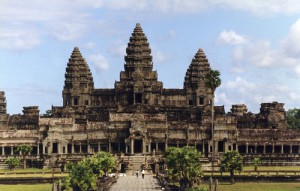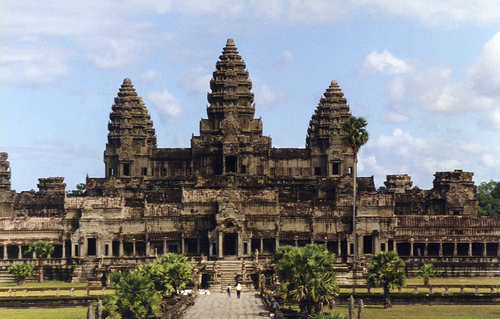It’s a great time to embark on a Cambodia holiday, with the country really starting to open up and become one of Asia’s most popular travel destinations, following its rather troubled recent history.

There’s a lot more to Cambodia than tranquil rice fields and steaming jungles, though these also have their allures. Cambodia had one of the greatest empires in Asia at one time, and the massive remains of the Khmer dynasties can still be seen wreathed in jungle foliage all over the country – real Indiana Jones stuff.
An excellent climate, affordability and more than a touch of the Eastern exotic are what draw Western tourists here now. As well as some great resorts the country is also ideal for independent travellers because it is so unspoilt and full of that often elusive ‘unfamiliar way of life’. And despite having been the stomping ground of the odious Pol Pot just a few decades ago the people remain cheerful, friendly and extremely hospitable.
South East Asia has been experiencing a boom in tourism since the 1970s; with Thailand first to start reaping the benefits and honing its act, shortly to be followed by Vietnam once the American military had left, and now it’s the turn of Cambodia. Tourism is fast becoming its main industry, with over two million visitors from around the globe arriving here each year.
If Cambodia had been more settled and less of a theatre of war until quite recently it would have been ‘discovered’ a lot sooner, because it has everything tourists are generally looking for: fantastic beaches, great weather, rich and fascinating culture and a long and eventful history that has bequeathed it some of the most impressive remains in the world.
Angkor Wat is a case in point. Located in the northwest of the country near the city of Siem Reap, this is a UNESCO World Heritage Site, a vast temple complex and officially the biggest religious site on the planet. It was started in the early ninth century and just kept on growing until the mid-fourteenth century when it was sacked by armies from neighbouring Thailand along with the rest of the Khmer capital.
But Angkor Wat is just the tip of the iceberg and there are loads of other places to visit in Cambodia. Also close to Siem Reap for example is a famous floating village on Tonle Sap Lake, where you can see Cambodians living today in almost exactly the same way as they did in ancient times. The houses are all wooden and built on stilts, and the villagers lead an amphibious life, using small canoes and making their own nets for fishing.
Put at least a full couple of days aside for Phnom Penh and its magnificent palaces and pagodas. A giant Buddha statue encrusted with thousands of diamonds broods benignly over the city, witness to Cambodia’s glorious and pious past. But the Tuol Seng Genocide Museum also bears its own witness to more recent events – the reverse of Cambodia’s coin, you might say.

